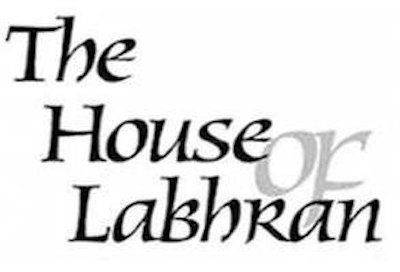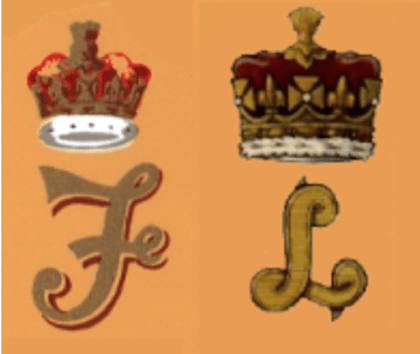Seaforth Highlanders Badge - The Origin and Meaning
Seaforth Highlanders Badge - The Origin and Meaning
Guest blog post by Canadian regimental historian Robert MacDonald SBStJ CD FSA Scot) - Seaforth Highlanders Canada
The red deer or elk stag with its majestic spread of antlers has been one of the iconic images of Scottish art since prehistory. It has been carved on stones, painted on vellum, and when a highland dancer throws his arms above his head in the classic pose he is imitating the horns of the stag – but to students of military history it means just one thing; the badge of the Seaforth Highlanders. ( The trustees of the Gordon Highlanders are free to write their own history on the subject)
The Stag's-head badge is one of the oldest badges in military heraldry and owes its origin to a hunting incident in the Forest of Mar in or around the year 1266. At one point in the hunt Alexander lll, King of Scotland was 'unhorsed' and a wounded stag turned on him.
Colin (Fitzgerald) of Kintail, chief of what would later be known as the Clan MacKenzie ran to his aid with the shout 'Cuidich 'n Righ’!(Scots Gaelic; “Help the King!”) and killed the stag. In gratitude the King granted the arms of 'a stag's head caboshed ' (cut off at the neck) with the motto "Cuidich 'n Righ" as the armorial bearings of the MacKenzies of Seaforth. It is popularly believed that the “Stag’s head caboshed” means that therefore Colin Fitzgerald killed the stag by beheading it, although there is no evidence that this is true. On the other hand, there is equal lack of evidence that this is false, but given the size and musculature of a mature stag the story should be treated with caution.
“Death of a Stag” or “Alexander III being rescued from the Fury of a Stag by the Intrepidity of Colin Mackenzie”, by Benjamin West (1738-1820).
To this day, the patronymic for the Chief of the Clan Mackenzie is CabarFeidh (The Stag’s Head).
The 'Stag's-heid' has long been affectionately referred to as "Hector" by the soldiers of Lord Seaforth's Highland Regiment. Can anyone tell us why?
Although many regiments and corps have different cap-badges for Officers and Other Ranks, the Seaforth's (*) are one of the very few regiments in the Commonwealth to have a distinctive cap-badge for Sergeants and Warrant-Officers.
This is because when Lord Seaforth raised the 72nd Foot in 1778, the number of gentlemen who applied for commissions exceeded the number of positions available. The unsuccessful applicants accepted employment as Sergeants but they were every bit as aristocratic and professional as the officers, and it was for this reason that they founded the world’s first Sergeant’s Mess! This was remembered (or perhaps ‘acknowledged’) when the stag's-head badge was adopted for use as a cap badge in 1881.
Sergeants and Warrant Officers wear a 3-d silver 'Hector' with a separate banner bearing the words "Cuidich n' Righ" (simply referred to as the 'motto').
One Hundred Years of ‘Hectors’: Left to Right; pre-1910 Officer’s badge ( possibly 78th Highlanders/ 2nd Seaforth Highlanders ), ca.1910-1939 Officer’s, ca.1910-1939 Serjeant’s, ca.1939-1960s Officers and Sergeants, ca.1974-present Officers and Sergeants. The difference in design is the result of different moulds used by the various Regimental Jewellers over the years.
One soldier is annually selected by the Commanding Officer (on the advice of the Regimental Sergeant-Major - Seaforth Highlanders Canada) as ' Soldier of the Year ' and that soldier is presented with a Sergeant's cap badge, which he (or she) is then entitled to wear for the rest of his service regardless of what rank he may eventually achieve.
'Commissioned' and 'Chief Warrant' Officers wear the same badge as the Sergeants but with the addition of the Coronet and Cypher of Leopold, Duke of Albany, Colonel-in-Chief of the regiment from 1881-1884. The Coronet and Cypher of Frederick Duke of Albany (1763-1827) is borne on the Regimental Colour and various pieces of Mess silver.
Left; The Cypher of Frederick Duke of Albany (1763-1827), Right; The cypher of Leopold Duke of Albany (1881-1884)
From 1881 until amalgamation the ( British ) Seaforth Highlanders lobbied to change the name back to “Lord Seaforth's Highlanders" - which is why the brass shoulder-titles read “Seaforth’s”.
The officers of the 72nd Highlanders of Canada, taken in August 1913 Captain Clark is 4th from the left in the middle row.
Copyright 2014 Robert John MacDonald CD FSA Scot - West Coast Kilts




